Ordinary Kiwis
| Frank Papprill of the 19th Armoured becomes an unexpected guest of Pope Pius XII. Frank relates how Padre Somerville (DSO) enlightened him how God helps those at War. He further describes an incident when he felt he needed this help most. | |
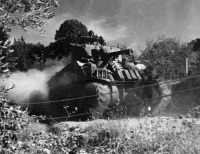 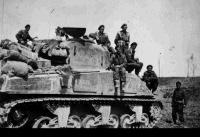 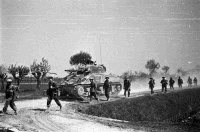 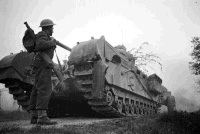 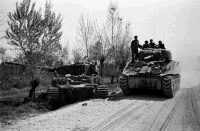 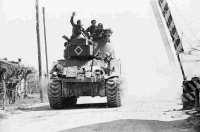 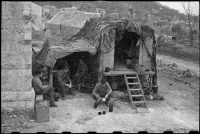 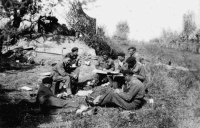 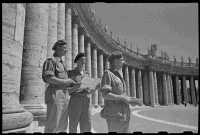 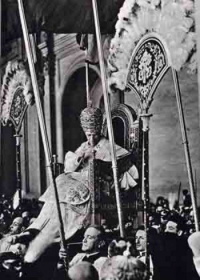 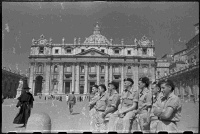 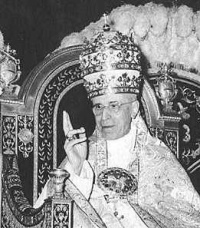 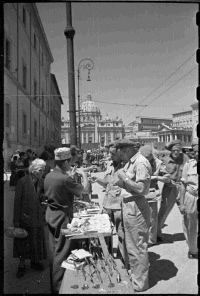 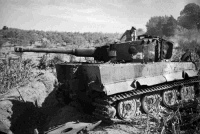 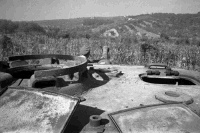 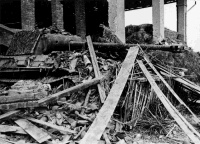 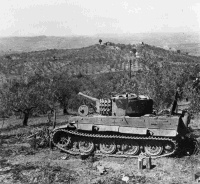 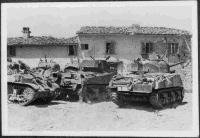 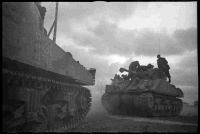 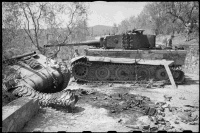 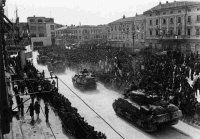 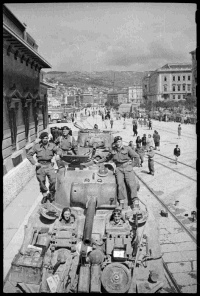 | Frank Papprill joined the Queen Alexandra's Mounted Rifles (QAMR) in 1941 but was forced to remain in New Zealand because he was under age. While training at camp in Foxton, Frank witnessed the transformation of the QAMA into an armoured formation, trading in their horses for tanks, to make up the 4th Armoured Brigade. The motivation for creating a New Zealand armoured brigade came from the need for New Zealand troops to have their own armour as a reliance on British armour in the desert had been problematic and costly. After training in M 5 Stuarts and Valentines, Frank sailed for the Middle East where he began training with M4 Shermans before joining the 2nd New Zealand Division (2NZDiv) in Italy after the grinding Battle of Monte Cassino and the hard-fought crawl up the Italian Peninsula. The 2NZDiv had suffered heavy casualties and, with D-Day taking strategic precedence, the 2NZDiv (as part of the Eighth Army) was beginning to feel more of a sideshow, despite holding down German Divisions needed in the East and West. During this time Freyberg, realising that his division was exhausted, organised rest and recreation as a way of checking flagging morale, problems with discipline, and looting. Rome was a popular destination and it was while on a trip to this city that Frank Papprill found himself at an unexpected audience with the pope. Introduction written by Franks Grandson, Carl. Patrick: You meet the Pope? How did you manage to do that? Frank: We were on the Senio River. There was snow and sleet, and Christ knows what. It was very, very cold. They wanted someone to take a machine gun up to the front line with the infantry and shoot up a hay stack that they were convinced the Germans were using as an observation post. I said "yeah, I’ll go up". They told me I’d better go get some sleep because I’d be up all night. I went and lay down and when I came too my neck was over on to one side. I had a severe case of fibercitous and I couldn’t straighten my bloody neck. So I rushed off to the RAP and they sent me back into one of the hospitals. I was in there for a week and then when I could straighten my neck, they said "Oh well, we’ll send you on leave for a fortnight". There was a chap named Ted Ferry from the South Island who also had leave, and we got together and set off for Rome. Once we got to Rome, we booked into the hotel that Freyburg had commandeered for the use of the N.Z. troops, and we were booked into a room there. We had a good look around Rome, Ted and I, and then we went to the Vatican City. We intended to stay and see as much as we could so we were practically there all day. We were going through and we came to these monstrous doors that must have been at least 14 feet high. We banged on the door and the next minute it opened and a Swiss Guard was there and he said "What’s the trouble?" We told him that while we are here we wanted to see as much as we can of the Vatican City before we go back up the line. He said "The Pope is giving an audience today" that is Pope Pious, "Would you like to be involved?" Old Ted being a Catholic was dead keen. The guard said "Just wait here." and then went away and closed the door. He came back 10 minutes to 15 minutes later, "Yes, come on in." he said. He took us in to a great big vast hall, and right down the far end was a platform with a throne on it. We go up the steps and said "Just wait here." He went away and he came back with two chairs and said "The Cardinals’ will be in to talk to you." A little while later, a couple of Cardinals’ come in, in their robes and they said that the Pope would be coming in and was gonna give an audience that day. They gave us a little booklet on the Vatican City plus another smaller one, that had pressed flowers from the Vatican City inside. We sat there and a little while later on our left of the stage a door opened and in came high Italian Officials who just stood round in a half circle. Then on our side, the door opened and in came American Colonels and Generals with all their ribbons, and all their good mocka on. They formed up behind Ted and I, sitting in chairs, two old Kiwis! Once they were all settled down, the Cardinal had a little talk. Then the doors that we had come through originally, were opened by the Swiss Guards and in came a multitude of people. Within a matter of half an hour, that vast hall was packed with people. I would say there would be well over a thousand, maybe 1500 people in that hall. Patrick: How big was this Hall? What was the crowd like? Frank: It was a monstrous place. The crowd were all seated, so you could sit. Then there is a fan-fare of trumpets and out come the Swiss Guards from the side door at the far end of the hall. They were followed by more Cardinals. Then in came Swiss Guards carrying the Pope on a chair with poles. You know with poles that sit on top of their shoulders. Following them were more Cardinals and Swiss Guards. They all lined up and came right down this big centre isle. Then once they got to the edge of the stage the Swiss Guards bent their knees, and that meant that the chair that the Pope was sitting on was level with the stage, and he just stood up, stepped onto the stage and sat on the throne that was on the stage. The Cardinals were quick to form up round him while the Swiss Guards just stood back This American with a camera tried to take a photo and next minute "Bang", a Swiss Guard slammed down a Hellard on it. A Hellard is like a big axe. You don’t take photos without permission. They didn’t know, he could have been trying to shoot the Pope. Anyway, then the Pope got up, stood and faced the Italians and he blessed them. When he was finished he was taken round with the Cardinals and introduced to all these American Generals, Colonels and all these high ranking officials. Of course we were in another line. Then he comes to Ted and I. The deal with the people is, they take his hand, he’s got a big ring on his finger, and they bend their knee and they kiss the ring. And he blesses them. When he came to Ted, old Ted goes down to his knee, takes the Popes hand and kiss the ring. Well I wasn’t up on this so as the Pope put his hand out I just took it and shook it and he said to me, "Oh," he said "you come from N.Z?" I said "Yes sir." Well he said "I hope you get back to your loved ones safe and sound and you get through the war safe and sound." I said "Thanks very much Sir." Then he went on to the next lot. And then he blessed the multitude and then it was all over. Once he finished the Swiss Guards go down, and he steps onto this throne and they carry him off, and all the Cardinals and other Swiss Guards following him. Patrick: How did you feel after meeting the main man with all that "Fan Fair"? Frank: It was a big big thing for old Ted, he just was really rapped. And it was something that the average Kiwi wouldn’t of got to do, and of course when we came back to NZ; it was all "Oh, the Pope from the Vatican City, that’s amazing". It took me nearly three months to get all that paraphernalia back. Patrick: So when you knocked on the door, what did you expect to gain? Were you causing mischief? Frank: No, we only wanted to know what was behind it. It was a real bonus for us, for that Swiss Guard to go to the trouble of going to see the Cardinals to see if we could meet the Pope. We didn’t expect to see the Pope. All we wanted to know was what was behind that door. Seeing that he was there, that was a bonus for us. Patrick: So you were two Kiwis sitting on two chairs while the Cardinals and the American Brass came in and stood around you. Were the American Brass given chairs? Frank: No, no chairs for them, they weren’t important enough! Patrick: Did the look like they were they wondering who you were? Frank: I bet they were. We didn’t say a word because we were sitting in chairs when all these other people came in. We were the first in, Ted and I, and it was fantastic to be sitting up on the stage with nobody in this vast hall, nothing. And then a couple of these Cardinals come out and they spoke to us and gave us these little booklets. I didn’t see any of the Americans getting any of these booklets with pressed flowers. Patrick: When it came to kissing of the ring, why didn’t you kiss it? Frank: I didn’t know any better. As far as I was concerned, you don’t follow, I could have followed what everyone else did, but I wasn’t a Catholic, so I just took his hand. You don’t squeeze it either because he was just about transparent; you could see all his blood vessels, because he was a very thin joker. You just take his hand and sort of half-pie shake it. He is blessing you while you’re doing that you see. Patrick: How would you describe the Pope’s presence? Frank: He had a charisma about him, no doubt about that. And, yeah, as far as we were concerned, he was a very pleasant old gentleman, and he did have that aura about him, you know, he gave you that feeling. Patrick: Do you think he was surprised you shook his hand rather than kissed the ring? Frank: Well, I suppose he’d struck a lot like that. I wouldn’t be the only one not a Catholic that met the Pope over the years that he was Pope. Patrick: and the Americans, they all kissed the ring? Frank: Yeah, every one of them was Catholic you see. We were sitting right in the front. Before the Pope came in, once all the multitude were in, they came and took the chairs away you see, Ted and I were standing right in the centre of all these Americans. Patrick: So, as far as anyone in the audience, or the Americans were concerned, you and Ted could have been quite important guests, being the only two sitting down when they came in. Frank: I suppose someone could have thought that. But we were just two ordinary Kiwis. Patrick: After travelling through a country devastated by war and experiencing the realties of mobile warfare, what was your take on religion? You know that saying "There are no atheists in a fox hole"… Frank: Yeah, that was one of the stories that you hear. There is always this thing about religion. The Germans are praying to God for help to kill us, the British and anybody else, we’re praying to wipe the Germans out. There is one thing that old Padre Sommerville said that I'll never forget. After finding this German belt that had something like "may God be with us or God be by our side, it was something like that" embossed in the buckle. I just couldn’t believe this business of both of us praying to God for salvation. And he said, "What do you say if you have a near miss? "Jesus Christ!, that was close" I tell him. "There you are", the Padre says "you are calling on Jesus to help!" Whether that’s true or not …… "Jesus Christ, that was close!" There sure was a lot of that. Patrick: Can you tell me of an incident where you may have said or thought "Jesus Christ" the loudest or meant it most? Frank: We were going into action using artificial daylight; it was about half-past two in the morning. The Jerries must’ve had a Tiger tank up on a hill above us. he knocked out the tank in front of us out, and then he blew the back off our tank! We were stuck in the middle of the paddock, becuase the tank behind us, had also been stopped. He got all three tanks! When the shell hit our tank, it also hit the water tank. You know we had a jerry can full of water and it was all coming down through the periscope. I’m feeling for the wound, because it’s all running down my face and head, I was like this looking for my blood, but there’s no blood. While I was looking through my fingers, I could see the driver was hit, you know our tank driver, there was blood squirting everywhere! I yelled to the tank commander, "Mons, Mons, Mons" I said "Christ, Mons been hit, we’ll have to get him out!" "No, no, no he can’t get out." Bullets were hitting the tank and things like that. "Christ! We gotta get him out! Can’t leave him like that!" So we opened up the lid and away I went. We couldn’t go anywhere, the tank was totally immobilised. I just put my hands underneath his armpits and lifted him out of the drivers’ seat and got him down underneath the tank, and then of course we put the field dressings where his mouth and jaw was. It was not long before 5 o’clock before I could talk. We’ve got a telephone on the outside of the tank that allows you to talk to the crew inside. I’d tell them what to do, and they got in touch with the Field RAP. Just on 5 o’clock, this joker, he was a First Echelon man, he arrived with a Bren Carrier to take the wounded away. It was him and a driver. He had a top hat and frock coat and an umbrella, and he had the umbrella up and of course the Red Cross flag, and he was yelling out to his driver "Onward my boy, onward my boy!" When he pulled up alongside the tank where I was, he called out "And my boy" he said "you’ve got a patient for me?" I said "yes, he’s here." He jumped down and we put Mons onto a stretcher and into the carrier. He jumped back on the carrier, and up goes his umbrella and he says "Onward my boy, onward my boy" and away he went. That was the last I ever heard of Mons. I don’t know to this day what happened to that man. I think that he would have died. I should imagine with half his face blown away, with the jaw and his teeth, I doubt if he survived. I made enquiries, but I could never ever find out whether he’d passed on or not, and whether that was his true name because he had only been with the regiment for about three or four weeks. |